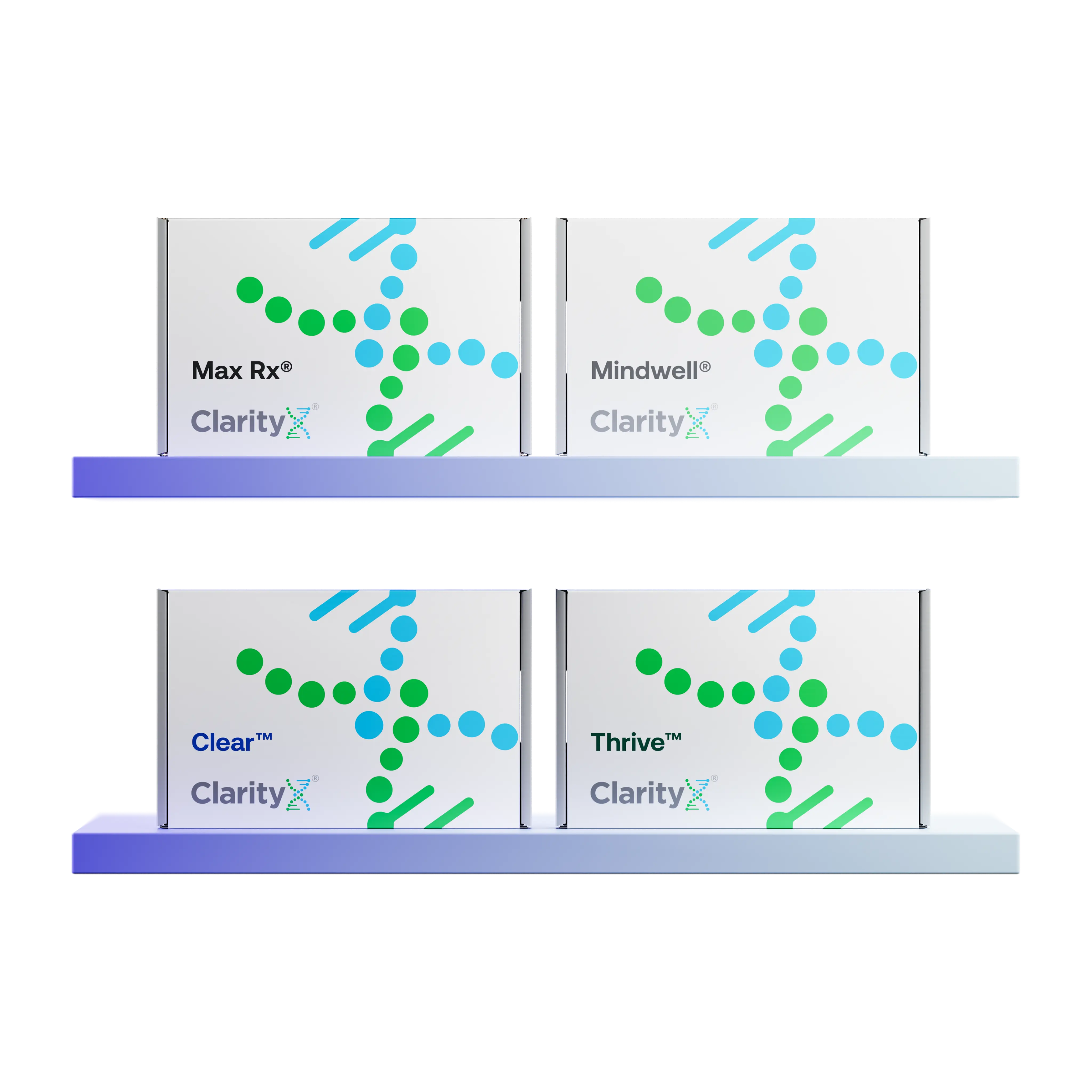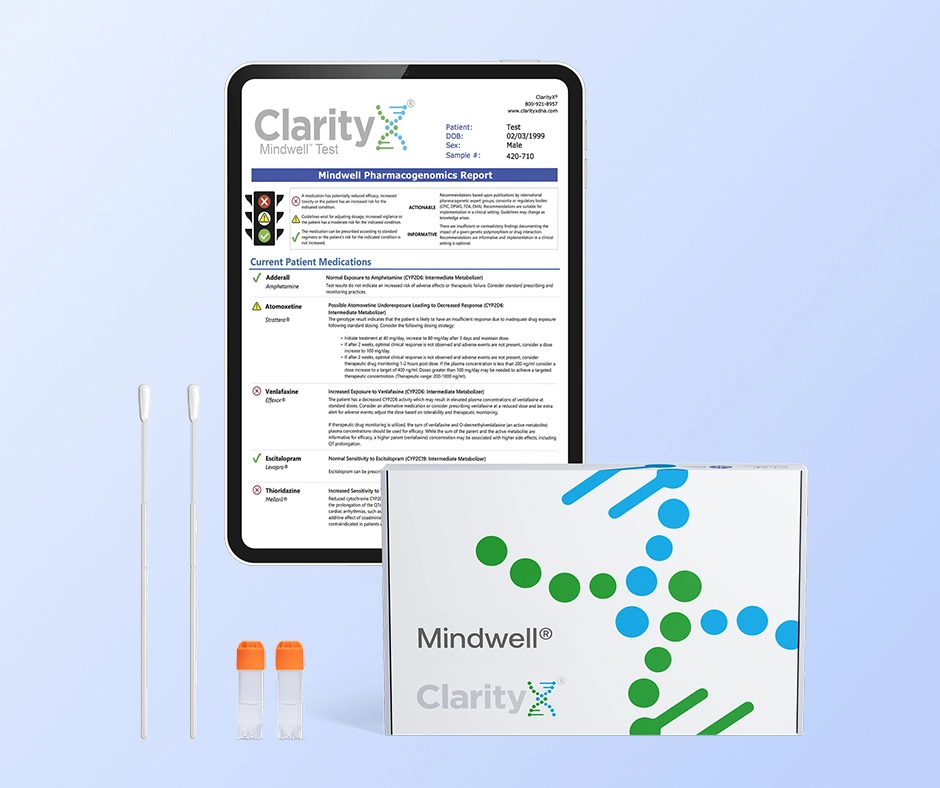Key Highlights
- Lorazepam® and Diazepam® are both benzodiazepines used to treat anxiety and other mental health conditions
- Lorazepam is used more frequently for mental health, while diazepam is also often prescribed for muscle tightness, seizures, and alcohol withdrawal
- They work by enhancing the activity of GABA in the brain
- The duration of action is an important factor when selecting benzodiazepines — Lorazepam is an intermediate-acting benzodiazepine, while Diazepam is a long-acting benzodiazepine
- Both medications have the potential for abuse and dependence and should only be taken with proper medical advice
- There are some key differences in dosage forms, administration routes, and side effects between the two drugs
Introduction
Lorazepam and Diazepam are two common medications used to treat anxiety and other mental health conditions. Both drugs belong to a class of medications called benzodiazepines, which work by enhancing the activity of a neurotransmitter called gamma-aminobutyric acid (GABA) in the brain. GABA is an inhibitory neurotransmitter that helps reduce excessive neuronal activity, leading to a calming effect.
It's important to note that both Lorazepam and Diazepam are prescription medications and should only be taken under the guidance of a healthcare provider. This is because benzodiazepines have the potential for abuse and dependence. They should not be taken without proper medical advice, and the dosage should be carefully monitored.
In this blog, we will explore the key similarities and differences between Lorazepam and Diazepam, including their mechanism of action, conditions they are commonly used to treat, potential side effects, and other important considerations. By understanding these similarities and differences, you can make a more informed decision with your healthcare provider about which medication may be right for you.
Understanding Lorazepam and Diazepam
Lorazepam and Diazepam are both benzodiazepines, a class of medications that are commonly used for their sedative effects and in the treatment of anxiety disorders. These medications work by enhancing the activity of GABA, a neurotransmitter in the brain that has a calming effect on the central nervous system.
Anxiety disorders are a common mental health condition characterized by excessive worry, fear, and unease. They can significantly impact a person's daily life and overall well-being. Lorazepam and Diazepam are often prescribed to help manage the symptoms of anxiety disorders, such as excessive worry, restlessness, and irritability.
It is important to note that benzodiazepines like Lorazepam and Diazepam should only be used as a short-term treatment option for anxiety disorders. They are not recommended for long-term use due to the potential for dependence and abuse.
Before starting treatment with Lorazepam or Diazepam, it is essential to consult with a healthcare provider who can properly assess your symptoms and determine the most appropriate course of treatment. They will consider factors such as the severity of your anxiety, your medical history, and any other medications you may be taking to ensure your safety and well-being.
What is Lorazepam?
Lorazepam is a benzodiazepine medication used to treat anxiety disorders. It works by enhancing the effects of a neurotransmitter in the brain called GABA. This helps to calm the brain and nerves, leading to a reduction in anxiety. Lorazepam is the generic version of Ativan.
What is Diazepam?
Diazepam is a benzodiazepine medication used to treat anxiety, seizures, and muscle spasms. It works by enhancing the effects of GABA in the brain. Diazepam is commonly known by the brand name Valium.
How Lorazepam and Diazepam Work in the Body
Lorazepam and Diazepam, both belonging to the class of benzodiazepines, exert their effects by enhancing the activity of gamma-aminobutyric acid (GABA) in the brain. GABA is an inhibitory neurotransmitter that helps regulate brain activity, leading to a calming effect. By increasing GABA's inhibitory actions in the central nervous system, Lorazepam and Diazepam promote relaxation, sedation, and anti-anxiety effects. This mechanism of action makes them effective in treating conditions such as anxiety disorders, insomnia, and seizures, by reducing excessive brain activity that can manifest as symptoms of anxiety or seizures.
Mechanism of Action for Lorazepam
Lorazepam, a benzodiazepine, exerts its anxiolytic effects by enhancing the inhibitory effects of gamma-aminobutyric acid (GABA) in the central nervous system. GABA is an inhibitory neurotransmitter that reduces brain activity, leading to a calming effect. This action results in decreased levels of anxiety and promotes sedation. By binding to specific GABA receptors, lorazepam enhances GABA’s inhibitory effects, producing a sedative effect.
Mechanism of Action for Diazepam
Diazepam exerts its effects by enhancing the activity of gamma-aminobutyric acid (GABA), an inhibitory neurotransmitter in the central nervous system. Binding to specific GABA receptors enhances the inhibitory effect of GABA, resulting in increased neuronal membrane permeability to chloride ions, which hyperpolarizes the cell membrane. This hyperpolarization inhibits the rapid firing of neurons, thus producing a calming effect on the brain. Diazepam's mechanism of action contributes to its sedative, anxiolytic, muscle relaxant, and anticonvulsant properties.
Key Similarities Between Lorazepam and Diazepam
Both lorazepam and diazepam belong to the benzodiazepine class of medications. They are commonly prescribed for treating anxiety disorders, panic attacks, and insomnia. These drugs work by enhancing the effects of gamma-aminobutyric acid (GABA) in the brain, leading to a calming and sedative effect. Additionally, both medications can cause similar side effects, such as drowsiness, dizziness, and muscle weakness. It is essential to use these drugs under the supervision of a healthcare provider due to the risk of dependence and the potential for abuse.
Conditions Commonly Treated
Conditions commonly treated with lorazepam and diazepam include anxiety disorders, panic attacks, insomnia, and seizures. They are also used in alcohol withdrawal syndrome to prevent withdrawal symptoms like tremors and seizures, as well as delirium tremens and hallucinosis. Additionally, lorazepam and diazepam are prescribed for muscle spasms, sedation before medical procedures, and as an adjunct treatment for major depressive disorders. These medications are essential in managing conditions that affect the central nervous system and require a sedative effect to alleviate symptoms effectively.
General Side Effects and Risk Factors
Among the general side effects and risk factors of lorazepam and diazepam are drowsiness, dizziness, and muscle weakness. These medications can also lead to memory problems and respiratory depression, especially when used with alcohol or other central nervous system depressants like opioid pain relievers.
It is crucial for healthcare providers to monitor individuals closely for any signs of adverse reactions, particularly at high doses. Additionally, both drugs carry the risk of physical and psychological dependence, making it essential to follow the prescribed dosage and duration to avoid withdrawal symptoms. Regular consultations with healthcare professionals can help address any concerns promptly. It is also important to be aware of the possible side effects of Valium and Ativan, including severe allergic reactions, difficulty breathing, mood changes, and unusual behavior. If any of these severe side effects arise, it is important to contact a healthcare professional immediately.
Diving into the Differences: Lorazepam vs Diazepam
Lorazepam and Diazepam, both benzodiazepines, exhibit differences in their efficacy for various conditions and dosage forms. Lorazepam is favored for treating anxiety disorders, while Diazepam is commonly used for alcohol withdrawal and other related conditions. Administration routes also differ, with Lorazepam often given orally and Diazepam available in various forms, including tablets, injections, and rectal gels. Understanding these disparities is crucial for healthcare providers to prescribe the most suitable medication based on the specific health condition and patient needs.
Efficacy in Treating Various Conditions
Lorazepam and diazepam are effective in treating different conditions. Lorazepam is commonly used for anxiety disorders, whereas diazepam is also often prescribed for seizures, muscle tightness, and alcohol withdrawal syndrome. Both medications work by enhancing the effects of GABA in the brain, leading to a calming and sedative effect.
Lorazepam is preferred for the treatment of anxiety due to its faster onset of action compared to diazepam. Because the medication is cleared more quickly, it can be less likely to cause lingering side effects, allowing for more targeted, as-needed therapy.
On the other hand, diazepam is more commonly used for alcohol withdrawal due to its longer duration of action and FDA approval for this indication. It’s also used more commonly for skeletal muscle spasms and seizures.
It’s important to be aware of other treatment options as well. A network meta-analysis has shown that midazolam, another medication in the same drug class, may be more effective than lorazepam and diazepam in treating status epilepticus in children. Chlordiazepoxide is also often used for alcohol withdrawal, with the final choice of medications often being defined by liver function.
Dosage Forms and Administration Routes
Lorazepam and diazepam are typically available in various dosage forms, including tablets and injections. Lorazepam is commonly administered orally or through intramuscular injections, while diazepam can be taken orally, intravenously, or as a rectal gel. The choice of administration route depends on the condition being treated and the healthcare provider's recommendation. It's essential for patients to adhere to the prescribed dosage and administration instructions to ensure the safe and effective use of these medications. Understanding the appropriate dosage forms and administration routes, including the available strengths of lorazepam (0.5 mg, 1 mg, and 2 mg) and diazepam (2 mg, 5 mg, and 10 mg), is crucial for optimal treatment outcomes.
Side Effects: Lorazepam vs Diazepam
Lorazepam and diazepam, both benzodiazepines, share common side effects in the central nervous system (CNS), such as drowsiness, dizziness, muscle weakness, depression, and memory problems. However, the central difference between lorazepam and diazepam is that lorazepam leaves a person's system more quickly, reducing the duration of toxicity or side effects.
Common Side Effects of Lorazepam
Some common side effects of lorazepam include drowsiness, dizziness, weakness, and unsteadiness. These effects are typical when initiating treatment or with dosage adjustments. Nausea or changes in appetite may also occur. It is essential to inform your healthcare provider if these effects persist or worsen.
Confusion, memory impairment, and an increased risk of falls become significant concerns when any benzodiazepine medication is used by individuals over the age of 65. If you experience any severe side effects, such as difficulty breathing or a rash, seek immediate medical attention. Always follow your healthcare provider's guidance while taking lorazepam.
Common Side Effects of Diazepam
Blurred vision, drowsiness, and muscle weakness are common side effects of diazepam. Nausea, dizziness, and unsteadiness can also occur. It's essential to inform your healthcare provider if these effects persist or worsen. In some cases, diazepam may cause memory problems or behavioral changes. If you experience difficulty breathing, yellowing of the eyes or skin, or severe dizziness, seek immediate medical attention.
Special Considerations and Warnings
Several population groups warrant more caution when considering either medication. Individuals over the age of 65 and those with a history of substance abuse should exercise particular caution.
Use in Special Populations
Lorazepam and diazepam usage in special populations, such as the elderly or those with liver impairment, requires caution due to potential adverse effects. Special monitoring by healthcare providers is crucial to mitigate risks in these vulnerable groups.
Pregnant women or individuals with a history of substance abuse also necessitate tailored treatment plans to prevent complications.
Understanding the unique needs of special populations is vital for safe and effective medication management. Healthcare professionals must carefully evaluate the risks versus benefits when prescribing lorazepam or diazepam to these groups.
Potential for Abuse and Dependence
Lorazepam and Diazepam, both benzodiazepines, carry a risk of abuse and physical dependence if not used as prescribed. These medications are intended for short-term use due to their addictive potential. Healthcare providers closely monitor their prescriptions to minimize the risk of misuse. Patients should follow the recommended dosage carefully to avoid developing dependence.
Abruptly stopping these drugs can lead to withdrawal symptoms, including agitation, and should be done under medical supervision to manage potential adverse effects. It's vital to be aware of the addictive nature of these medications and to use them responsibly under the guidance of a healthcare professional, including making necessary lifestyle changes to support recovery.
Drug Interactions and Contraindications
Drug interactions and contraindications are crucial considerations when using lorazepam and diazepam. Both medications can interact with various substances and other drugs, potentially leading to adverse reactions. To avoid harmful interactions, it is essential to inform your healthcare provider about all the medications you are taking, including over-the-counter drugs and supplements. Certain health conditions or medications, such as those that affect liver enzymes, may contraindicate the use of lorazepam or diazepam, emphasizing the necessity of consulting with a healthcare professional before starting these treatments.
Lorazepam Interactions and Safety Precautions
Lorazepam, a benzodiazepine often prescribed to manage anxiety disorders, interacts with other medications. It can increase the sedative effects when combined with alcohol, causing excessive drowsiness. Healthcare providers caution against using lorazepam concurrently with other central nervous system depressants like opioid pain relievers due to the heightened risk of respiratory depression. Individuals with a history of substance abuse or dependence should use lorazepam with care, as it carries the potential for misuse. Following your healthcare provider's guidance closely is crucial to minimize the risk of adverse reactions.
Diazepam Interactions and Safety Precautions
When taking diazepam, it is crucial to be aware of potential drug interactions. Diazepam can interact with various medications, including antidepressants, anticonvulsants, and other benzodiazepines like Xanax. These interactions may lead to increased sedation and respiratory depression, which can result in serious side effects.
To avoid adverse reactions, it is vital to inform your healthcare provider about all the drugs you are taking, including over-the-counter medications and supplements. Additionally, precautions should be taken when combining diazepam with alcohol, as it can worsen side effects such as drowsiness and dizziness. Careful monitoring by a healthcare professional is essential to ensure the safe use of diazepam and to prevent serious side effects.
Genetic Testing For Anxiety
Genetic testing for anxiety is a type of genetic test tool that analyzes your DNA to predict how your body will process and respond to specific medications. By examining genetic variants primarily those affecting liver enzymes the test reveals if you are likely to metabolize a drug too slowly (increasing the risk of severe side effects) or too quickly (making the medication ineffective).
This genetic insight allows doctors to move away from a "trial and error" prescribing method, helping them select the right drug and the right dose from the start to maximize treatment success while minimizing adverse reactions.
Conclusion
In conclusion, understanding the differences between Lorazepam and Diazepam is crucial for making informed decisions about their use. While both medications have similarities, such as treating similar conditions, they also have distinct characteristics that set them apart. It's essential to consider factors like efficacy, side effects, and administration routes when determining which drug best suits individual needs. Always consult a healthcare professional for personalized guidance on choosing between Lorazepam and Diazepam or exploring alternative treatment options. Your health and well-being should always be the top priority.
Frequently Asked Questions
Can Lorazepam and Diazepam Be Used Interchangeably?
When considering lorazepam and diazepam, it's important to note that they are not interchangeable due to differing potencies and durations of action. Always consult a healthcare professional before making any changes in medication.
How Do I Know If Lorazepam or Diazepam Is Better for Me?
Comparing Lorazepam and Diazepam requires considering factors like an individual response, the condition being treated, and potential side effects. Consulting a healthcare provider for personalized evaluation based on medical history and specific needs is crucial in determining the better option.
Are There Any Alternative Treatments to Consider?
Exploring alternative treatments is crucial. Options like cognitive-behavioral therapy or other medications may be considered based on individual needs. Discuss with a healthcare provider to determine the best course of action.
https://www.ncbi.nlm.nih.gov/books/NBK526124/#:~:text=GABA%20receptors%20are%20receptors%20that,gated%20ion%20 channel%2 Inotropic%20 receptor.
https://www.ncbi.nlm.nih.gov/pubmed/11937649
https://pubmed.ncbi.nlm.nih.gov/28101764/
https://www.aafp.org/pubs/afp/issues/2021/0900/p253.html
https://dailymed.nlm.nih.gov/dailymed/drugInfo.cfm?setid=c397a9da-862f-4f3f-8109-7d21691de53a
https://dailymed.nlm.nih.gov/dailymed/drugInfo.cfm?setid=4fae1607-69d7-47ce-9b78-7474af50036d






